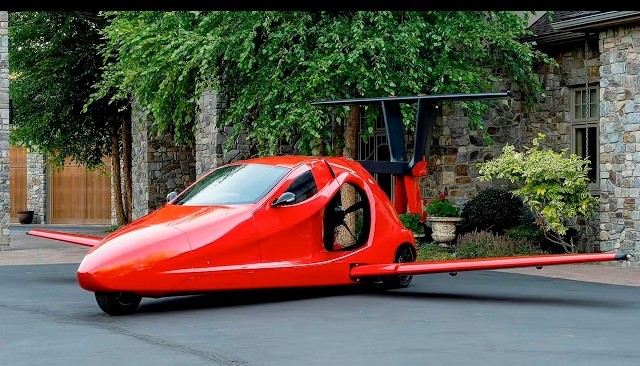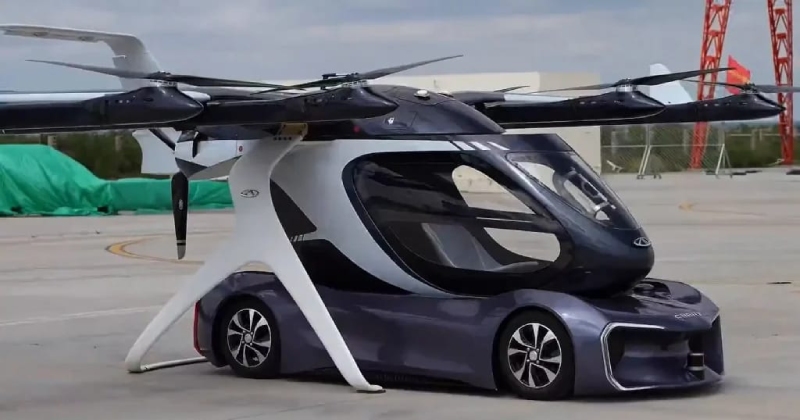When Chinese automaker Chery announced it will unveil a “land-and-air” family flyer in October 2025—fresh off an 80 km unmanned test hop—it signaled the moment a mainstream carmaker put a calendar date on the Back to the Future dream. The modular eVTOL prototype, built around an all–solid-state battery pack, promises 70-80 km range and fully autonomous flight, slotting neatly into Beijing’s push for a “low-altitude economy.”
How today’s “cars” leave the pavement
Modern flying cars are really electric vertical-take-off-and-landing aircraft (eVTOLs). Distributed rotors lift the craft straight up; once airborne, a rear pusher prop or tilting fans hand off to stubby wings for cruising. Flight computers juggle thousands of micro-adjustments per second so the vehicle neither stalls nor rolls during transition. Light carbon-fiber frames and high-energy batteries keep weight under the 600–900 kg sweet spot for 15-100 mile city hops.
Who else is chasing the sky lane?
| Company | 2025-26 milestone | Why it matters |
|---|---|---|
| Samson Sky (US) | Switchblade manufacturing line revamped; first customer deliveries targeted 2026. | Fold-out wings turn a three-wheel sports coupé into a 160 mph aircraft; latest production process cuts cost 25 %. |
| Klein Vision AirCar (Slovakia) | 620-mile range version slated for commercial launch; wings deploy in <3 min. | Certified to fly in EU; drives on normal fuel, cruises at 160 mph. |
| Joby Aviation (US) | FAA type-inspection flights expected within 12 months; commercial air-taxi service 2026. | Five-seat eVTOL backed by Toyota, Delta, and the U.S. DOD. |
| Archer Aviation (US) | Midnight craft set to debut in Abu Dhabi air-taxi network 2025. | Nine-minute Newark–Manhattan demo run shows sub-$100 fares may be viable. |
| Eve Air Mobility (Brazil/US) | $250 million order for 50 aircraft inked June 2025; São Paulo launch operator named. | Airbus lineage and aftermarket bundle hint at scalable support model. |
Sources: IE, CNC, EVTOL, COOLD, T&T, TN, FC Insier, IoTWT
Image credit: Samson Sky
Headwinds and tailwinds
- Certification paths diverge. The FAA keeps eVTOLs on a single end-of-program type-certificate track, while China and the UAE let prototypes fly limited routes under phased “through-year” approvals—mirroring the way some U.S. states split K-12 testing into interim and end-summative models.
- Entrance-exam moment. Roughly a third of U.S. states swapped high-school EOCs for the ACT/SAT; air regulators may one day accept an industry-run safety audit in lieu of full commercial certification for recreational road-flyers, reserving the strictest rules for taxi fleets.
- Skeptics still buzz. One columnist recently banned “flying-car” headlines until consumers can buy one off a lot—reminding investors that prototypes are not profits.
Market outlook
Analysts peg the global eVTOL/flying-car segment at ≈ $243 million in 2025, rising into the low billions by 2035—tiny next to conventional EVs but growing at >30 % CAGR. Governments see upside: the U.S. includes eVTOL funding in advanced-air-mobility bills, while China earmarks subsidies for low-altitude corridors. Noise caps, battery density and vertiport zoning remain the gating factors.
Image credit: Chery
So—DeLorean in every driveway?
Probably not by 2030, but Chery’s October debut—and production lines at Samson Sky, Klein Vision and others—suggest commuters may soon have some chance to swap gridlock for skyways. If certification and public acceptance fall into place, Marty McFly’s ride could feel less like fiction and more like the morning commute—flux capacitor optional.


